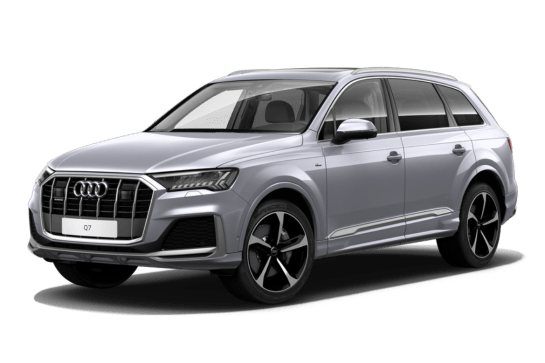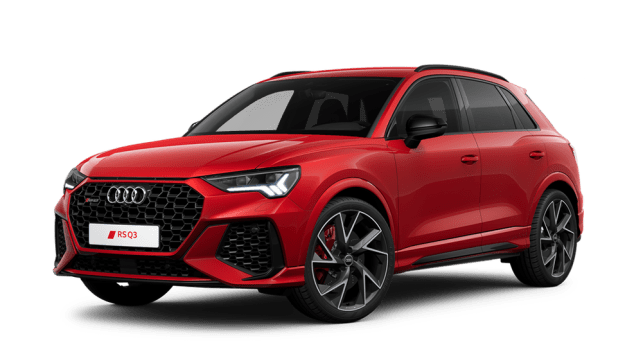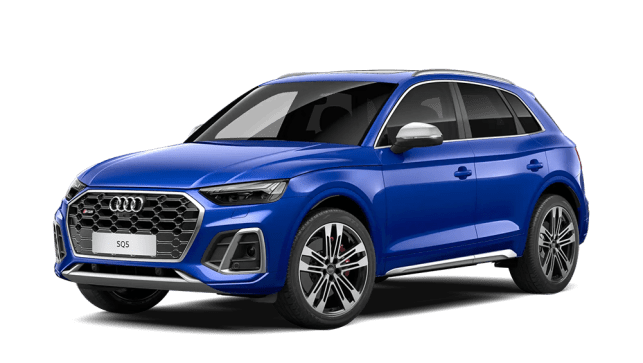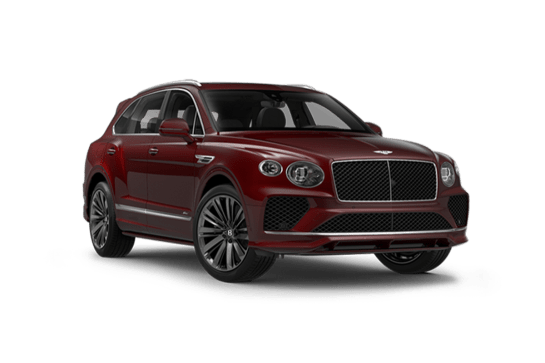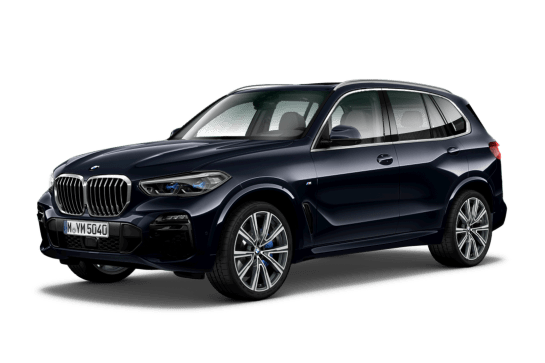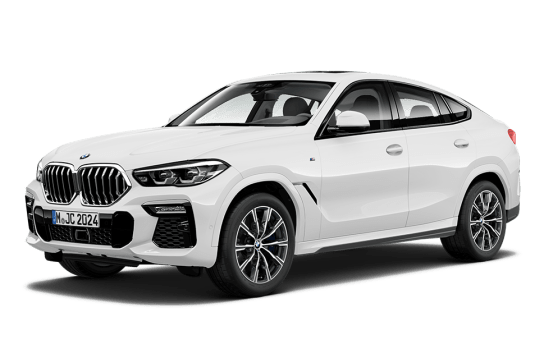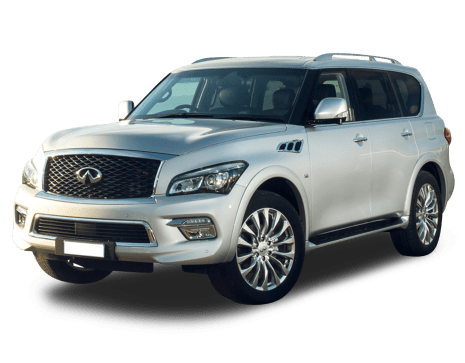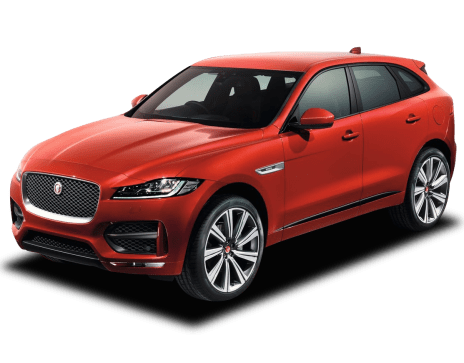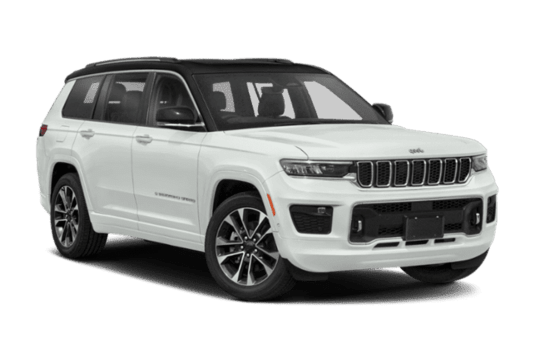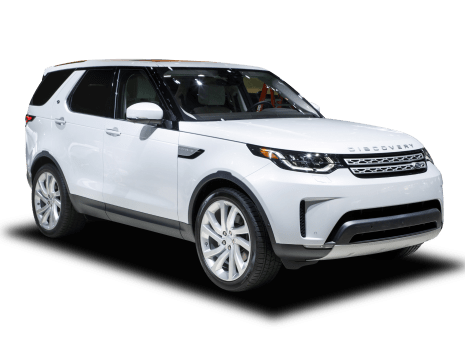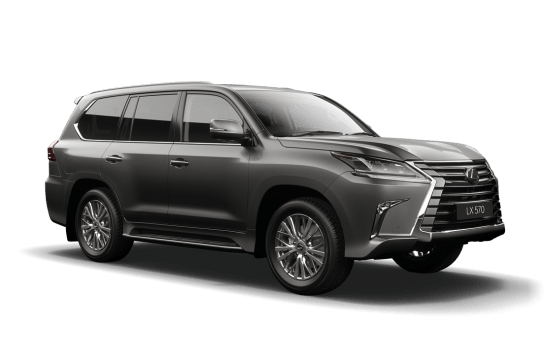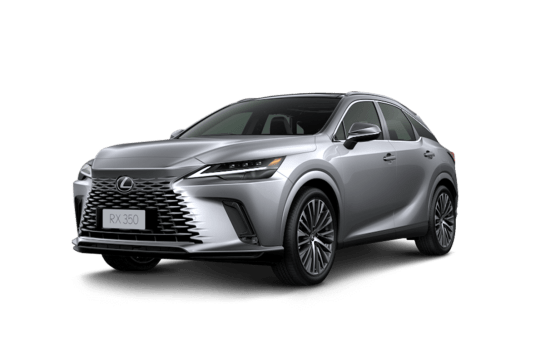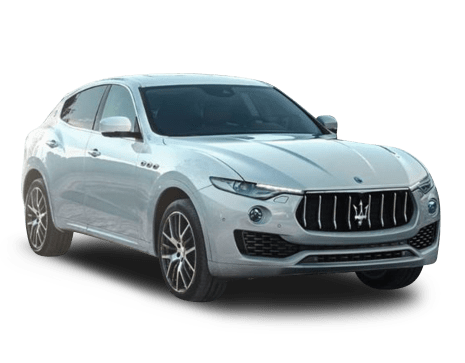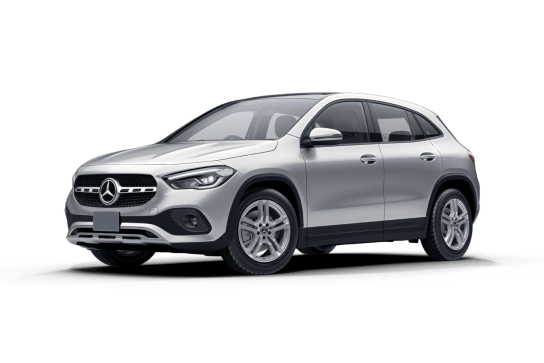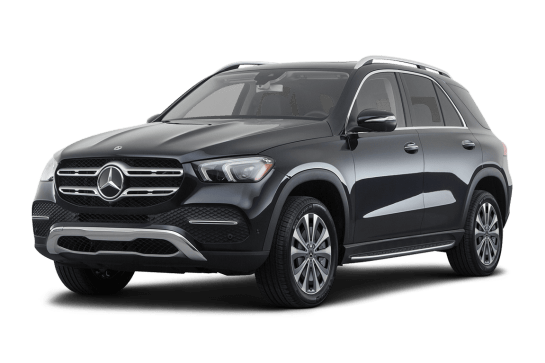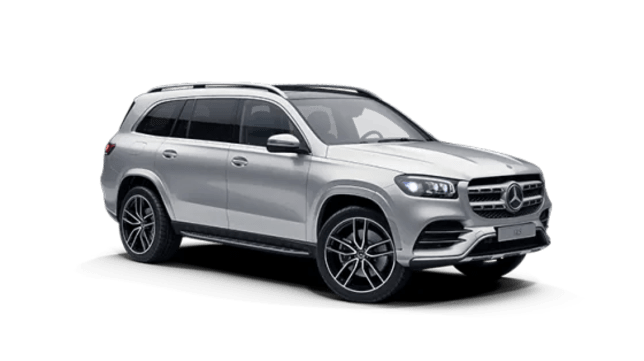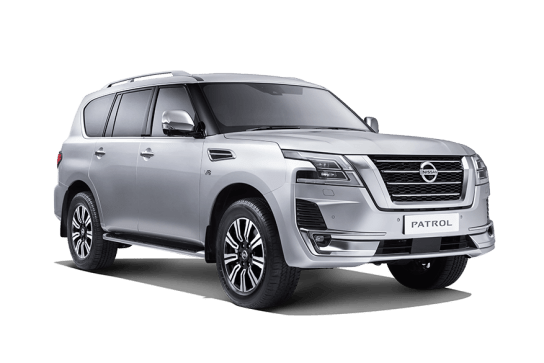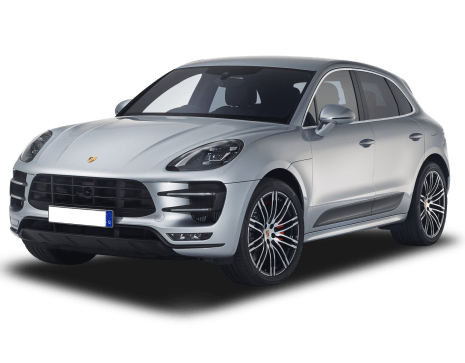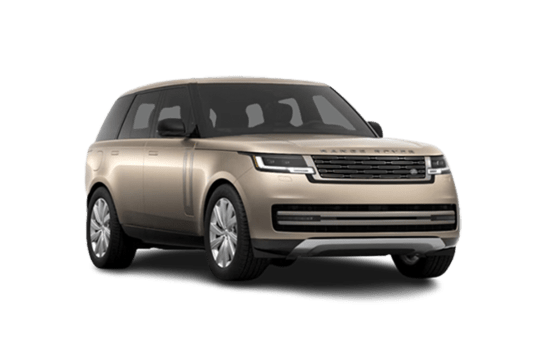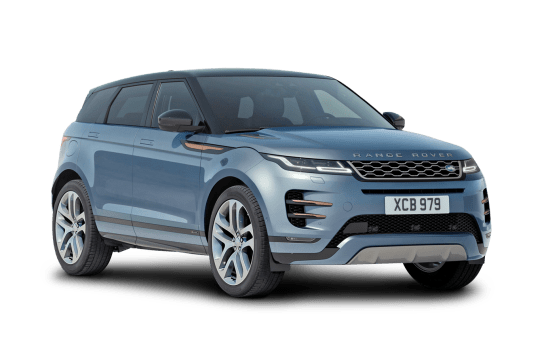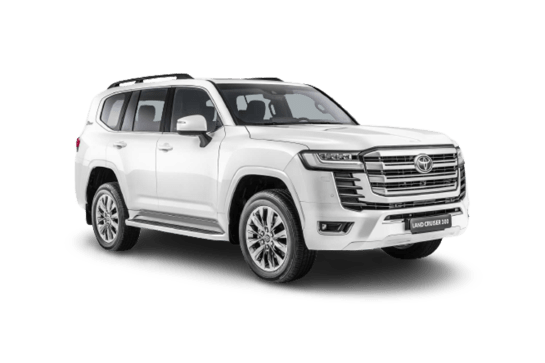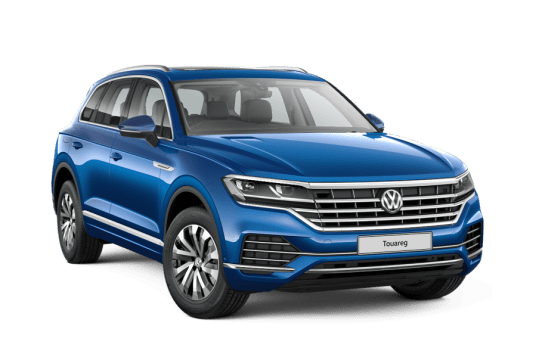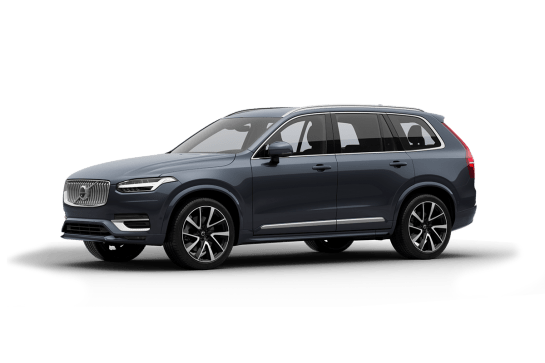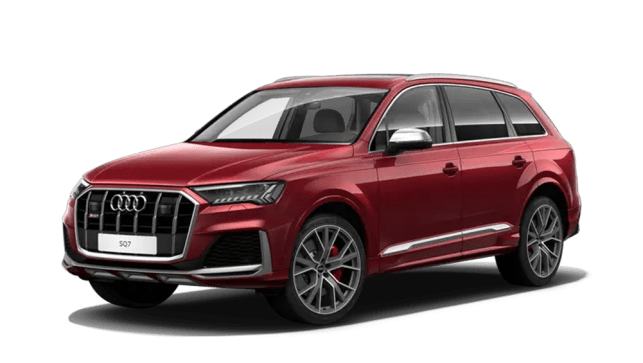
Audi SQ7 VS BMW X6
Audi SQ7
Likes
- Growling V8 soundtrack
- Spacious, classy cabin
- Impressive ride and handling
Dislikes
- Lacks clever interior storage
- Engine is thirsty
- Expensive to service
BMW X6
Likes
- Thoroughbred on-road handling
- Practical and luxury features
- Updated technology looks great
Dislikes
- Polarising exterior looks
- Lots of good features embedded in extra-cost packages
- Updated multimedia system takes a while to get used to
Summary
Audi SQ7
The Audi Q7 has come in for its second facelift as it enters its ninth year of production while the younger Q8 is in for its first refresh.
But these two aren't like the Mitsubishi ASX and Eclipse Cross pair; Audi's MLB underpinnings were cutting edge at their launch 2015 and remain stand-out in the class with advanced suspension and chassis tech, connectivity and refinement.
A host of small visual and performance tweaks aim to make the range-topping SQ7 we're driving even better. But should you make the sensible seven-seat decision or go a little rogue and choose the sloping-roofed SQ8?
| Safety rating | |
|---|---|
| Engine Type | 4.0L turbo |
| Fuel Type | — |
| Fuel Efficiency | 12.1L/100km |
| Seating | 7 seats |
BMW X6
First launched in 2008, the BMW X6 created history (and a new car category) with its coupe styling on an SUV framework.
It was a polarising effort but one that opened up the SUV market for those wanting the size and presence of an SUV without compromising on the sporty styling of a smaller car.
The 2024 X6 has had a facelift and that brings a more athletic and robust kerb-side appeal that might swing a few fence sitters onto the side of liking it.
Read more about
The already pleasant interior has been polished with extra customisations available on trims and accents. The technology has seen the biggest upgrade and it now features a more streamlined mild-hybrid component to the engine. It all positions the X6 well and truly within the rank of luxury.
For the last week I’ve been driving the mid-spec xDrive40i M Sport variant to see how the facelifted model holds its own against rivals, the Audi Q8 55 TFSI Dynamic Black and Mercedes-Benz GLE450 4Matic Coupe.
| Safety rating | — |
|---|---|
| Engine Type | 3.0L turbo |
| Fuel Type | — |
| Fuel Efficiency | 9.3L/100km |
| Seating | 5 seats |
Verdict
Audi SQ77.9/10
There are newer options than the current Audi SQ7 and SQ8, including those which use the same platform, but don't write these luxury large SUVs off just yet.
It's a rare thing that a vehicle costing $200,000 has an air of pragmatism about it, but the SQ7 does. Its sensible leather upholstery, decent practicality, towing capability and near-excess of interior space make it a great family wagon.
As a counterpoint, the sharper looking SQ8 has minimal trade-off in comfort and interior room (at least for five) and is the kind of statement piece you'd expect for the price — especially in one of its loud paint colours.
Whichever way you leap, it's true that while the SQ7 and SQ8 are ageing, they are doing so gracefully and remain a superb option in this segment.
Note: CarsGuide attended this event as a guest of the manufacturer, with accommodation and meals provided.
BMW X68.3/10
I was not expecting to like the BMW X6 xDrive 40i M Sport as much as I do. The styling is still polarising but the facelift will throw more people towards the liking rather than disliking side of the fence. The cabin and boot are super practical and the X6 nails all the premium elements you expect at this level. It’s driving and handling are what win me over, though.
My son loves this one and doesn’t want to hand it back. My husband also noted how nice he thought the X6 was… and that’s saying something for a born and raised 'country boy'!
Design
Audi SQ7
If you're getting an SQ7, you'll want to tick the 'Black Pack' box because otherwise there are a lot of high-gloss silver details, especially at the rear that don't suit this tall and slightly awkward SUV.
The SQ8 is more convincing, appearing wider on the road with its new 'singleframe' grille design seemingly sucking it even closer to the tarmac like some kind of overgrown Audi RS3.
Both get an attractive new 2D design for the Audi rings and L-shaped grille details. These aid the SQ7's front end which is more muscular and purposeful than before.
The attractive lights have moved higher up the front end for enhanced presence, too. You get Matrix LEDs as standard but these candles are the hardcore HD Matrix items that feature laser light for further even longer light throw at night. They are simply awesome.
Fresh 22-inch alloy wheels and minor changes to badges finish off the exterior treatment for both cars.
The SQ8's bold specification — finished here in 'Sakhir Gold' — sets it apart from other SUVs as the metallic gold paint shimmers in the sunlight. The SQ8 is also available with whopping great 23-inch alloy wheels that you see here.
Inside, both cars share a similar architecture with 10.1-inch touchscreen for the multimedia and an 8.6-inch item below for heating and ventilation settings.
The SQ7 is a great example of a design ageing without dating, its confident horizontal lines and well-proportioned cabin features are as attractive as they were at launch, if less impressive than the related VW Touareg's whopping 15-inch screen or the minimalist Range Rover Sport.
Adding to the feeling of quality is that signature Audi smell — a combination of leather and the Sensory Package's perfume, no doubt. The SQ7 keeps a round-bottom steering wheel which remains one of the best in the business, it's just the right size and diameter trimmed with dimpled leather.
Final flourishes include the optional contrast red stitching and seatbelts as well as eye-catching turned aluminium trims.
BMW X6
SUV coupe styling with its raised platform and pinched bum just doesn’t do it for me usually but I like it on the new X6 model. The facelift helps the X6 appear more athletic and just plain meaner than the previous version.
The front end sees the most change with new adaptive LED headlights and a bigger 'kidney' grille. The kidneys are illuminated, which adds to its night-time presence and the extended blacked-out intake vents at the front and around the car make it look sharp as hell.
The weird prong on the side mirrors has been dropped in favour of a more seamless design (hurrah) and the 22-inch alloy wheels give total va-va-vroom sport-vibes.
On the interior, the dashboard has been revamped with a more pronounced shape and a curved display panel that houses the 12.3-inch digital instrument cluster and 14.8-inch multimedia system.
The air-vents now blend more into the dash but the little knobs for them might not be everyone’s cup of tea.
The ambient lighting is customisable and the quilted seats look beautiful but purists will wince on learning it’s synthetic leather, especially at this price point, but it feels and looks very nice.
Practicality
Audi SQ7
The difference between aged and dated is best summed up, though, by the excellent usability of the SQ7's cabin controls.
The separate screen for ventilation, for example, makes it simple to adjust seat or vent temperatures without interrupting the main screen's navigation instruction or other media systems.
When using wireless Apple CarPlay and Android Auto the top screen is entirely devoted to the other software with no remnants of Audi's system. It runs smoothly at all times.
Switching back to Audi's system, and there's a lack of contrast to the dark main screen and navigation. The touch targets are huge, though, and the satisfying click of the haptic feedback is welcome when driving. It seems expensive and natural in a world of feel-free touch operation.
Audi's 12.3-inch digital driver's display remains one of the best in the business. Legible and customisable with bespoke sport modes and the ability to show a full-size map, if you wish.
You can keeping devices charged with a wireless pad or there are two USB-C ports under the cushy centre armrest. A 12-volt socket is also available, and two more charge points are found in the back.
If there's one criticism in the front, it's the fairly limited storage. The door bins are big enough for a 600mL bottle but not much more and beneath the armrest the tray is shallow. The only other storage spots are the two cupholders which are the perfect size for a small take-away coffee.
While on the critiques, the drive mode selector is awkwardly hidden near the passenger below the touchscreen.
The seats are amazingly comfortable with ample support and power adjust for everything, including under-thigh length and bolsters. Several massage programs can be accessed through the menus, too.
Continuing the comfortable seating, the SQ7's second row is capacious with plenty of head, leg and toe room even for those over 180cm.
The bench slides forwards and backwards manually and the backrest is adjustable. A fold-down armrest contains two more small cupholders, and there are two separate climate zones, two vents and heated outboard seats.
However, folding and unfolding the second row is a bit complex and quite heavy work with a strange mix between electric and manual movement to access the third row — a Nissan Pathfinder does this better.
Once back there, the third row is passable for adults providing the second row is slid forward.
There are ISOFIX ports and top tether anchors for both power-deployed third row seats, so you can fit up to five children's seats in an SQ7.
The SQ8's second row is still generous but you do lose a small amount of headroom owing to the sloping roof design.
You also sacrifice some boot space, at 608L with five seats and 1755L with the second row folded. That's still a lot but the spacious SQ7's 793L/1921L figures are even better and 295L with all seven seats up is respectable. Both have sturdy 40/20/40 split-fold rear seats.
As the vehicles are equipped with air suspension, owners can raise or lower the boot floor to make it easier to load bulky objects if needed. A power tailgate is standard on both models.
A retractable luggage cover, netted pocket, boot lights and some underfloor storage complete the boot, however both cars lack a spare tyre of any sort. A tyre inflation kit is included.
BMW X6
You know you’re in a large SUV when you slide into the X6 because the cabin has a lot of space in both rows.
But also because of the higher centre console design, you feel tucked into the car despite the higher seating position. It makes it feel far sportier than your typical SUV.
Even back rowers enjoy decent legroom and headroom, despite the panoramic sunroof and sloping roof design. Six-footers should be relatively comfortable in both rows but it's best to reserve the middle seat as a sometimes position for adults. The raised floor won’t allow true comfort for a longer trip.
Let’s chat luxury because there’s plenty to be had with the electric front seats and their cloud-like comfort.
The electrically-adjustable side bolsters and adjustable lumbar support makes it feel like you’re being cuddled by the seat and also hold you in place in a turn. The extendable under-thigh supports minimise leg fatigue on a longer trip.
However, the back seat is almost as comfortable as the fronts in terms of cushioning. You also sit in, rather than on top of the seats which is a nice change for an SUV.
Individual storage is great in both rows and up front you get a dual-opening middle console, glove box and a handy utility area that houses the cupholders and two phone pockets.
There is also a storage nook on the driver’s side that will comfortably hold a wallet.
In the rear you enjoy two map pockets on the front seat backs and retractable cupholders in the fold-down armrest.
The armrest houses a shallow device holder and sits at a good height. Both rows enjoy deep storage bins in each door and a large drink bottle holder.
Happily, the holder is tilted towards the user, rather than away which is what you usually see.
The boot is a great size at 580L with all seats in use. There’s a little lip that has practical metal scuff plates but otherwise the loading space is level.
The hands-free powered tailgate is welcome and the handy 40/20/40 split on the back row opens up your storage options.
You get a temporary spare tyre underneath the floor and it’s cool how the floor has a gas strut, which makes the area much easier to access.
The concertina-style cargo cover is a bit dicky to use but I like how solid it is. It could easily double as a shelf by itself.
Charging options are abundant with a total of two 12-volt ports, a USB-A port, three USB-C ports and a wireless charging pad to choose from throughout the car. But it is annoying to use the pad when the front cupholders are in use.
I like having hardened kickplates on the backs of the front seats because my seven-year old loves putting his feet on everything.
The higher ground clearance makes this an easy car to get in and out of but it also makes for a great view for my son. He finds the doors a little heavy to close but the massive door grab handles help!
Amenities in the rear row make it a pleasant space to be in for kids and adults alike. You have reading lights, map pockets, two storage shelves and directional air vents.
There is manual climate control in this row, too, but it feels at odds with the rest of the high tech in the car.
On that note, the updated technology looks gorgeous.
The head-up display is clear and the digital instrument panel offers plenty of customisation. It's a super handy feature to access your recent call log via the steering wheel controls and see it pop up on the instrument cluster.
The touchscreen multimedia system is responsive but you can also use the rotary dial to get around it. There is a stack of information in it, though, which will take a bit to get your head around. Can’t fault its graphics, it looks hot, but some users may feel flustered at first.
The system has built-in satellite navigation that features an augmented reality feature, which overlays dynamic instructions on the video feed. What makes it practical is how it can be viewed on your instrument cluster, which means more on-road focus for the driver.
There is wired Android Auto and wireless Apple CarPlay, with the latter being simple to connect to. You don’t have the important climate control buttons/dials up front and I find it annoying to access the multimedia screen to change climate and fan speed settings.
What you lack in controls there is more than made up for in the centre console. There are a lot of buttons, from the push-button starter, rotary control wheel and everything in between.
Even after a week, my mind still has a mini freeze looking at them while on the go.
Price and features
Audi SQ7
Audi's range of Q7 and Q8 large SUVs starts at $117,284 for the 45TDI and there's a plug-in hybrid version from $152,284, both before on-road costs. The flagship SQ7 and SQ8 are $174,815 and $178,815, respectively.
The pair is a rare example of a discounted new car, albeit by a slim $585, so you'd expect these behemoths to offer comprehensive standard specification.
Features such as 22-inch alloy wheels, ambient interior lighting, soft close doors, power-adjust heated and ventilated seats, quad-zone climate control, 'Valcona' leather upholstery, a 17-speaker Bang & Olufsen sound system, full-length sunroof, navigation and a head-up display are included.
Naturally, options are available in packs and standalone choices with all vehicles we drove featuring at least one of the expensive box-ticks.
The 'Sensory Pack' seems a logical choice, bundling a 23-speaker, 1920-watt sound system with raising tweeters, 'Dinamica' headlining, massage seats, heated rear seats, Audi's air ioniser and interior perfume, extended leather upholstery and rear sun shades for $14,400.
Another major option is the $10,900 'Dynamic Package' with active roll stabilisation and Quattro Sport rear differential.
Stand-out stand-alone options include HD Matrix LED and Laser headlights combined with customisable OLED rear signatures ($3950) and the black exterior styling packages ($1850, or $2550 for the Plus version).
The as-tested price for the tow pack-equipped ($1500) 'Daytona Grey' car we spent most time in was rather high at $209,215 before on-road costs — that's over $30K worth of extras.
BMW X6
There are three variants for the X6 before you jump up to the performance M grade. Our test vehicle is the mid-spec xDrive40i M Sport model and will cost you $144,900 before on road costs.
That places it in the middle of its rivals and you get a well-specified model for the price tag but our test vehicle has also been fitted with a few extras, like the 'M Sport Package Pro' which adds a darkened grille and accents throughout the car, an M Sport exhaust system, red M Sport brake calipers and the M Sport signature colour stitching in the seat belts. All of that adds $2308.
Our test model also has the 'Enhancement Package' which tacks on $4616 but you get some great items like the crystal glass accents on the rotary dial and push-start button and a premium Harman Kardon surround sound system.
It also adds big 22-inch alloy wheels, a tyre pressure monitoring system and a temporary spare tyre which replaces the standard run-flat tyres on the base model.
Oh, and the 'M Brooklyn Grey Metallic' paintwork adds $1539. Just sayin’ it will cost you a pretty penny but it’s not outrageous for a luxury SUV.
Other standard equipment includes synthetic leather trims, electric front seats with heat function, electrically adjustable steering wheel, sports paddle shifters, M Sport styled scuff plates and badging, exterior puddle lamps and a full suite of LED lights including adaptive headlights.
You also enjoy a panoramic sunroof, adjustable lumbar support on both front seats, as well as extendable under-thigh support.
The drivers seat features two memory positions and comfort entry/exit functions (the seat and steering wheel slide back for you to get in and out of car).
For practicality, there is a hands-free powered tailgate, pre-entry climate control with programable entry time and a boot floor that features a gas strut for easy access.
We’ll touch on the tech later but the highlight is a new curved display panel that houses the 12.3-inch digital instrument screen and 14.8-inch touchscreen multimedia system.
Under the bonnet
Audi SQ7
The SQ7 and SQ8 both use a 4.0-litre twin-turbo 'hot vee' V8 petrol after the diesel SQ7 was abandoned in mid-2022.
It is the same engine you'll find in just about every application of this MLB platform, including the Porsche Cayenne, Bentley Bentayga and Lamborghini Urus — though it makes more power elsewhere.
In Audi's two medium-sporty SUVs it produces 373kW at 5500rpm and 770Nm between 2000-4000rpm.
In practice, it's a swelling, punchy engine without much top-end sparkle — though 4.1 seconds to 100km/h is nothing to scoff at.
The V8 also produces a rather splendid soundtrack, striking the right balance between Detroit burble and motorsport bark for this application.
An eight-speed torque converter auto transmission has been retuned for improved shift logic and it remains buttery smooth. It's pleasing enough just manoeuvring slowly around a car park, where you can feel just well calibrated the long travel throttle and transmission logic are.
BMW X6
The xDrive40i M Sport has a 3.0-litre, inline six-cylinder turbo-petrol engine with maximum outputs of 280kW and 540Nm. That’s 30kW and 90Nm up from the previous model.
It has a smooth eight-speed auto transmission and is all-wheel-drive.
The facelift sees the addition of a new mild-hybrid system which makes for almost imperceptible stop/start functionality when idling and a smidge better on-road fuel economy.
With a 0-100kmh sprint time of 5.4-seconds, it’s obvious that it has plenty of power to have fun with.
Efficiency
Audi SQ7
With 2340kg to heave around, not even the 48-volt mild hybrid system can save the SQ7's fuel consumption — it's a thirsty beast.
The rated ADR combined cycle (urban, extra-urban) figure is 11.8L/100km and indulging in the ample performance resulted in 16.5L/100km on the trip computer. The SQ8 was much the same.
The SQ7 is certified to tow up to 3500kg (braked), equal to a Toyota LandCruiser or Nissan Patrol.
A fairly large 85L tank gives the SQ7 a theoretical driving range of around 720km from a fill-up. Naturally, 98 octane unleaded is required.
BMW X6
Expectations for a thirsty engine were high, considering the hefty power available, but this version of the X6 has proved to be quite economical.
The xDrive40i M Sport variant has an official combined cycle fuel economy figure of 9.3L/100km but my real-world usage averaged 8.8L/100km.
That’s after mostly open-road driving with only a little ‘city’ thrown in but I didn't hesitate to use the power, so I'm happy with the result.
The X6 has a big 83-litre fuel tank and based on my usage, you’d see a driving range of around 943km, which is great.
BMW only recommends a minimum 95 RON petrol to be used.
Driving
Audi SQ7
Our drive loop started in South-East Sydney where the SQ7's burbly V8 and air suspension fitted right in, easily soaking up the worst of the concrete expansion joints and sharp-edged potholes.
It is a joy to waft around in the refined SQ7 with its remarkably good vision out the front and back (with 360-degree cameras to help elsewhere). Standard rear-wheel steer allows the back tyres to rotate up to 5.0 degrees, giving the 5072mm long SQ7 a better turning circle (12.5m) than a Q3 small SUV.
Its driven home further by the excellent drive mode customisation. Along with the standard programs, you can set an 'Individual' mode up with various selections for the suspension, steering, powertrain response and exhaust noise.
Following the SQ7, our time in the SQ8 took in some more twisting roads and the combination of 23-inch alloys with firmer suspension settings meant that, even in 'Comfort', 'Auto' or 'Balanced' drive modes, the coupe-styled model had a busier ride.
Both SQ7 and SQ8 featured 'Sport' adaptive air suspension, sitting 15mm lower than normal with the ability to drop the ride height up to 40mm in 'Dynamic' mode or raise it 50mm in lift mode to get out of sticky situations.
Audi chose not to specify the Dynamic pack on the SQ8, though, and the difference is noticeable compared to the SQ7. The coupe SUV rolls a little more in hard cornering and doesn't engage the rear end in quite the same way.
Back in the SQ7, turn in may feel a little less sharp owing to the taller height but the active roll stabilisation and Quattro electronically-controlled limited-slip differential splitting power between the two rear wheels makes for a more confident vehicle with better punch out of corners.
Grip is prodigious and the SQ7 is always in control with 285/35R22 Bridgestone Turanza T005 tyres.
A 2.4-turn lock-to-lock steering system is well-judged, remaining light in Comfort but adding enough weight and precision in Dynamic.
The brakes — 400mm front rotors clamped by six-piston calipers with optional ceramics — are reassuring and feel Autobahn ready.
The Audi SQ7 with Dynamic Pack is like an Olympic swimmer that's put on some kilos and had a few kids but can still gap his teenage son in a 50-metre freestyle race.
This is perhaps the perfect expression of Audi's 'S' models USPs, being totally normal when pottering despite huge reserves of talent.
BMW X6
The X6 is a thoroughbred on the road. It’s wide stance and massive wheels provide a well-balanced and grippy on-road ride experience.
Seriously, the tyres feel glued to the road even in the wet. Confidence is high with this one.
There is plenty of power to enjoy and you don’t feel like you’re digging deep for it, either, when you have to get up to speed or overtake.
It has the handling and power of a much smaller and sportier car but at no point does it feel wild or reckless to drive. It’s got a certain elegance and maturity to its handling.
Despite those massive wheels, the ride comfort is fantastic with the adaptive suspension. You still feel the road but you’re not knocked about by it. It’s very much a driver’s car in that sense but passengers still feel well-cushioned.
The cabin is insulated and you get basically no road noise or wind noise but occasionally you get some feedback from the tyres depending on the road surface. Longer journeys are comfortable and quiet.
The steering is light enough that you don’t feel like you’re hauling a massive SUV around but is still responsive. Meaning you can tackle a winding road or urban traffic easily.
When it comes time to park it, you’ll love having the 360-degree view camera system. It’s the best and clearest system I’ve sampled.
Add the front and rear parking sensors and no car space is an issue. But if you’re unsure, you can use the Park Assist feature to help out.
Safety
Audi SQ7
The Audi SQ7 is currently unrated by local ANCAP safety authority but Euro NCAP awarded a Q7 50TDI a maximum five stars in 2019.
It features eight airbags, adaptive cruise control, lane-keep assist, blind-spot monitoring, rear cross-traffic alert, surround-view monitor and exit-warning system to stop occupants dooring cyclists.
The adaptive cruise control is smooth and natural, although we found the lane-keep and lane-trace programs to be a little overbearing. Both can be easily disabled by holding the button at the end of the indicator stalk for about five seconds.
BMW X6
The X6 has an extensive safety list and I like the SOS emergency call button and front cross-traffic alert. Both are great to have but the latter is particularly useful on a large SUV like this, especially in the city or driveways.
Other standard safety equipment includes blind-spot monitoring, autonomous emergency braking, LED daytime running lights, forward collision warning, side collision warning, rear cross-traffic alert, lane keeping aids, lane departure warning, intelligent seat belt reminders, front and rear parking sensors, 360-degree view reversing camera, traffic sign recognition, driver fatigue monitor, and adaptive cruise control with stop and go functionality. As well as an SOS emergency call button and stolen vehicle tracking.
The X6 hasn’t been tested by ANCAP, so it’s unrated but it is based on the X5, which achieved a five-star rating in 2018. However, it only features six airbags which is low for a family car.
There are ISOFIX child seat mounts on the outboard seats and three top tethers in this row. Two seats will fit best but I reckon you could squeeze a third in if you had to.
There’s plenty of room for front passengers when you install a 0-4 rearward facing child seat, too, which is good.
Ownership
Audi SQ7
Audi recommends SQ7 and SQ8 owners bring their car in for a service every 12 months or 15,000km.
Service pricing is not cheap, with a five-year package costing $4600 for either model. For reference a basic service plan for a BMW X5 costs $3450 for five years.
Audi has moved to a five-year, unlimited kilometre warranty with owners able to extend that (for a fee) up to nine years with Audi Advantage. An extra two years of warranty and scheduled servicing costs $4360 for the SQ7 and $4160 for SQ8.
Additionally, customers get access to Audi's loyalty programs with event invitations, ambassador experiences and discounts offers from select partner companies.
BMW X6
The ongoing costs are surprisingly reasonable for a large luxury SUV! Like its rivals the X6 enjoys a five-year/unlimited km warranty.
However, you can pre-purchase a servicing plan for up to five years or 80,000km, whichever occurs first, for a flat $2400. Or an average of $480 per service which is inexpensive for this class.
Service intervals are also good at every 12 months or 15,000km, whichever occurs first.


